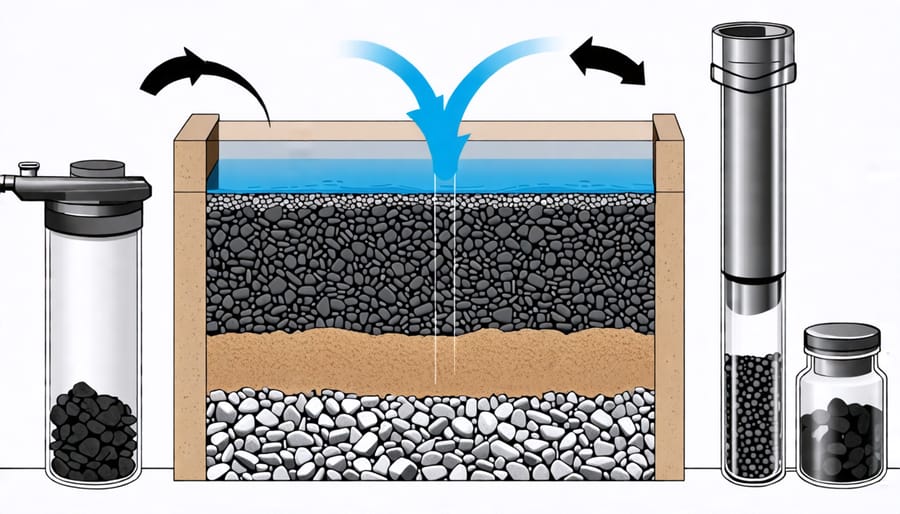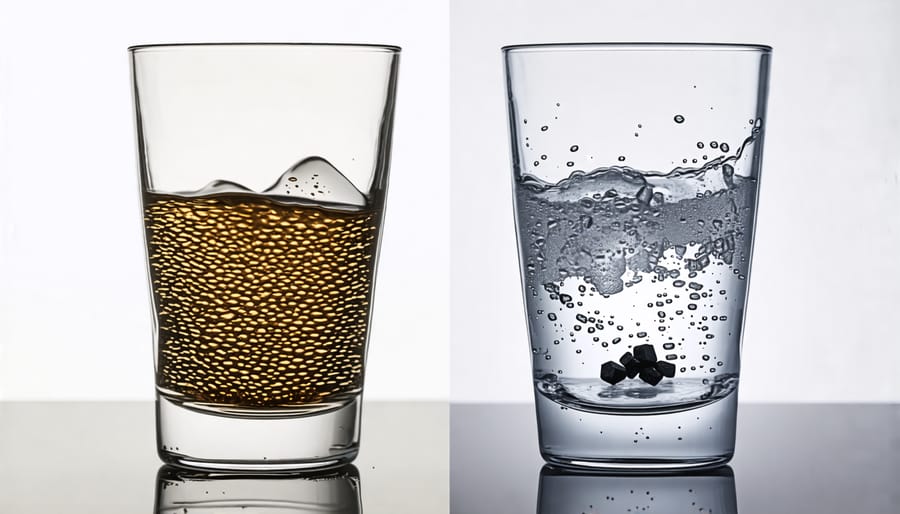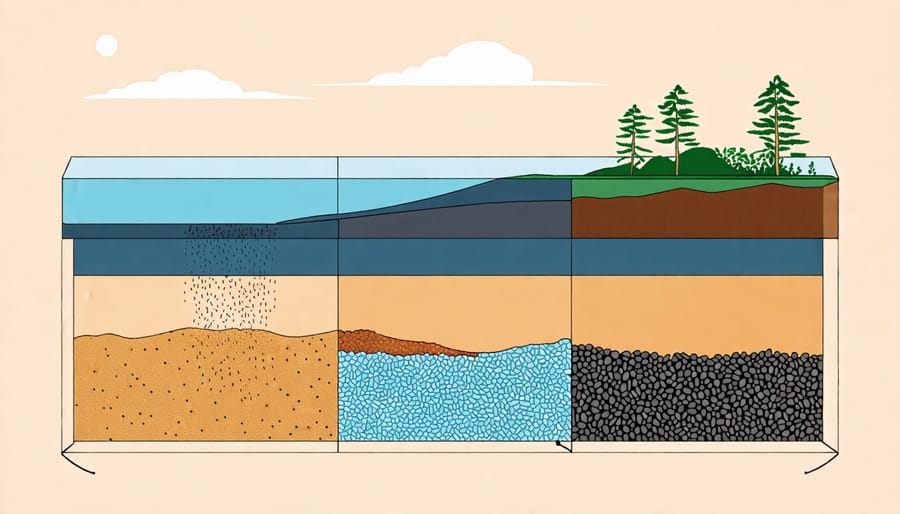
Survive Any Disaster: How to Make a Life-Saving Charcoal Water Filter
Boil water for 10 minutes to kill pathogens before pouring it through your charcoal filter. Charcoal adsorbs chemicals, heavy metals, and other contaminants. Grind lump charcoal into a fine powder using a mortar and pestle. Finer grains provide more surface area to trap impurities. Layer the powdered charcoal between sheets of cloth, sand, and gravel to create your DIY project survival filter. Pour water through slowly to allow enough contact time. Replace the charcoal frequently, especially if the water source is heavily contaminated. Monitor water taste and appearance to gauge when a fresh filter is needed.

How Charcoal Filters Work
Charcoal filters work through a process called adsorption, where impurities in water are attracted to and trapped within the porous surface of the charcoal. As water passes through the charcoal filter, contaminants like chlorine, sediment, volatile organic compounds (VOCs), and other chemicals stick to the charcoal, leaving the water cleaner and clearer. The effectiveness of charcoal filtration comes from its highly porous structure and large surface area. Activated charcoal, the type most commonly used in water filters, is treated with oxygen to open up millions of tiny pores between the carbon atoms. These pores, which can be as small as a few nanometers in size, give the charcoal an enormous surface area – just one gram of activated charcoal can have a surface area of over 3,000 square meters! This vast surface area allows the charcoal to adsorb a significant amount of contaminants from the water. The impurities are held tightly within the pores by a combination of physical and chemical forces, including Van der Waals forces and electrostatic attraction. As long as the charcoal filter is not completely saturated, it will continue to trap impurities, providing cleaner, better-tasting water. It’s important to note that while charcoal filters are highly effective at removing many common contaminants, they do have limitations. They are not designed to eliminate microorganisms like bacteria and viruses, and they may not remove certain heavy metals or chemical compounds. For comprehensive water purification in a survival situation, charcoal filtration should be used in conjunction with other methods like boiling or chemical treatment.
Materials Needed to Build Your Filter
To build your own charcoal water filter, you’ll need a few common materials that are easy to find around the house or at your local hardware store. Start by gathering a clean, empty plastic bottle or container with a cap, such as a 2-liter soda bottle or a large water jug. You’ll also need a sharp knife or scissors to cut the bottle, and a small piece of fine mesh, cheesecloth, or coffee filter to cover the mouth of the bottle. For the filtration materials, you’ll need activated charcoal, which can be found at pet stores or online retailers. Alternatively, you can make your own by burning hardwood or coconut shells until they’re charred, then crushing the cooled pieces into small granules. In addition to the charcoal, gather some clean sand and gravel to create a layered filtration system. Finally, make sure you have a large container or pot to collect the filtered water, and a stirring stick or spoon to mix the charcoal before adding it to the filter. With these simple materials, you’ll be ready to assemble your own charcoal water filter and ensure access to clean drinking water in any situation.
Step-by-Step Filter Construction Guide
Prepare the Filter Container
To prepare the filter container, choose a clean, sturdy container made of plastic, ceramic, or another non-reactive material. A large plastic bottle with the bottom cut off works well. Avoid metal containers, which can rust or leach contaminants. Thoroughly wash the container with soap and water, then rinse completely. Create a small hole in the bottom of the container for drainage. If using a bottle, remove the cap and enlarge the opening to allow water to freely flow through. Place a coffee filter or piece of clean cloth over the drainage hole to prevent charcoal from escaping.

Layer the Filtration Media
To layer the filtration media, start by placing a coffee filter at the bottom of your container. Add a 1-2 inch layer of small gravel on top. Next, add a 1-2 inch layer of coarse sand, followed by a 1-2 inch layer of fine sand. The sand helps remove smaller particles and impurities. Top the sand with a 2-3 inch layer of activated charcoal. The charcoal is the key component for absorbing contaminants and purifying the water. Finally, add another 1-2 inch layer of small gravel to help hold the charcoal in place and prevent it from mixing with the purified water. Make sure each layer is even and well-distributed for optimal filtration. Position a second coffee filter on top of the gravel to further prevent media mixing. Your multi-layer filtration system is now ready to purify water.
Condition and Use the Filter
Before using your charcoal water filter, it’s important to properly condition it. Start by flushing the filter with clean water to remove any loose charcoal particles. Pour water slowly through the filter, allowing it to drain completely. Repeat this process a few times until the water runs clear. Once conditioned, your filter is ready for use. Place a clean container under the filter to catch the purified water. Pour untreated water into the top of the filter, ensuring it doesn’t overflow. Allow the water to slowly pass through the layers of sand, gravel, and charcoal. The filtered water will collect in the container below. It’s crucial to note that while charcoal filters can effectively remove many contaminants, they may not eliminate all harmful microorganisms. For added safety, consider boiling the filtered water before drinking. With proper use and maintenance, your charcoal water filter can provide clean drinking water in emergency situations.
Proper Care and Maintenance
To keep your charcoal water filter functioning optimally, rinse the charcoal thoroughly between uses to remove any trapped particles and contaminants. Allow all components to air dry completely before reassembling and storing in a clean, dry location. Inspect the filter housing and other parts regularly for any cracks, leaks, or damage, replacing as needed to ensure a tight seal and prevent contamination. With proper care, your charcoal water filter can provide safe, clean drinking water for an extended period. However, it’s important to replace the charcoal every few months or sooner if you notice a decline in water quality or flow rate. When in doubt, err on the side of caution and refresh the charcoal to maintain the effectiveness of your survival water filter system.
Limitations and Precautions
While charcoal filters are effective at removing many contaminants, they have limitations. They cannot remove certain chemicals, heavy metals, salt, viruses, or bacteria. If water has a noticeable odor, color, or taste even after filtering, it may still be unsafe. Boiling the water after filtration provides an extra level of protection. In a survival situation, be cautious of potential pollutants near your water source that could overwhelm the filter. When in doubt, look for filters without charcoal or alternative purification methods to ensure access to clean, safe drinking water.
